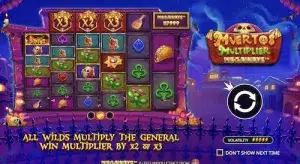Understand the Basics Before Diving In
One common mistake players make in Pai Gow Poker is not fully understanding the ranking system which differs slightly from other poker games. In Pai Gow Poker, the second highest straight is A-2-3-4-5, known as the “wheel.” Failure to recognize this can lead to missetting your hands and giving up potential wins.
Setting Your Hands Wisely
Pai Gow Poker involves creating two poker hands out of seven cards – a five-card hand (high hand) and a two-card hand (low hand). The five-card hand must always rank higher than the two-card hand. The strategy lies in how these hands are set. For instance, if you are dealt two pairs, it’s generally advisable to put the higher pair in your five-card hand unless you have a strong pair or ace to place in the two-card hand. This balances strength between the two hands, optimizing your chances of winning each hand.
Adopt Bankroll Management Tactics
Pai Gow Poker is known for its slow pace and frequent pushes (ties), making it essential to manage your bankroll effectively to endure through non-winning streaks. Setting a limit for wins and losses per session can prevent the rapid depletion of your bankroll.
Play the Banker Role When Possible
Acting as the banker in Pai Gow Poker can be a strategic move, as the banker wins on copies (ties). However, you’ll need a sufficient bankroll to cover all bets on the table when you’re the banker. This role rotates around the table, offering each player the opportunity to take advantage of the slightly favorable odds associated with banking.
Utilize the House Way to Your Advantage
While Pai Gow Poker allows for player strategy in setting hands, observing how the dealer sets their hands according to the “house way” can provide insights into effective hand-setting strategies. Each casino may have a slightly different set of rules for their house way, so learning these can give you a strategic edge when uncertain how to set your hand optimally.
Practice with Online Simulators
Before hitting the tables at a casino, practicing with online Pai Gow Poker simulators can be invaluable. These platforms allow you to experiment with different strategies and become comfortable with the game’s pace and rules without the risk of losing real money.
Focus on Long-Term Strategy Over Quick Wins
Pai Gow Poker is not designed for a quick win; instead, it is a game of patience and strategic decision-making. Working to win both hands can often lead to overall weaker hands that lose against the dealer. Sometimes it’s better to aim for a very strong hand (like a flush or straight) in your five-card hand even if it means sacrificing your two-card hand.
Identify Opportunities to Split Pairs
If dealt two pairs, the common strategy is to split them across the hands, but this decision should be influenced by the strength of the pairs and the remaining cards. If one pair is significantly stronger, it might be beneficial to keep them together to create a robust five-card hand, particularly if you possess a third high card for the two-card hand.
Conclusion
Winning at Pai Gow Poker requires a balance of strategy, patience, and occasionally, the willingness to take calculated risks. Always remember that the goal is to win both hands, but strategic sacrifices in one hand can lead to overall greater success. Practice these strategies, manage your bankroll wisely, and you may find yourself mastering the complexities of Pai Gow Poker.

David Garato is a luminary in gaming journalism, renowned for peeling back the curtain on the gaming world with his witty and insightful commentary. A decade into weaving stories from the pixelated edges of indie games to the expansive universes of AAA titles, David’s work is a thrilling blend of analysis and adventure. When not writing, he’s live-streaming, sharing his gaming exploits with an engaged and growing audience. David doesn’t just write about games; he lives them, making him a trusted guide in the gaming community.
















